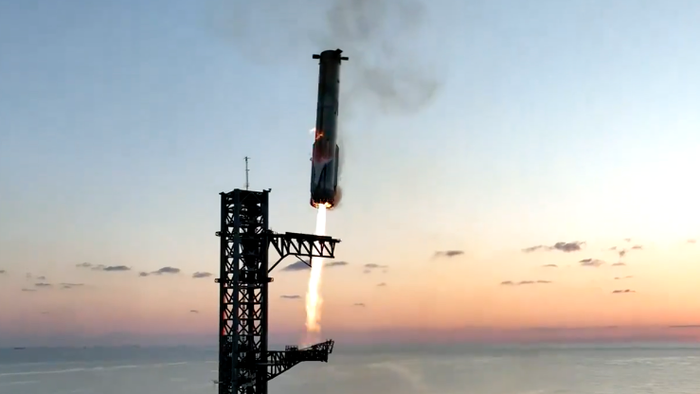On October 13, 2024, SpaceX successfully completed its fifth flight test of the Starship, with the rocket splashing down in the Indian Ocean. This event marked a significant milestone for SpaceX, further demonstrating the capabilities of the Starship and its design for rapid reusability. Following the splashdown, Elon Musk expressed gratitude on social media for the efforts of the SpaceX team, highlighting a positive view towards future lunar missions under NASA’s collaboration. Meanwhile, the achievement measured against previous flight tests underscores the continuous advancements SpaceX is making in its space exploration technologies, with subsequent tests anticipated to refine its capabilities even further.
Details about the test flights leading up to this latest one reflect SpaceX’s commitment to addressing objectives that include an attempt to catch the Super Heavy booster as it returns to the launch site. The pre-launch activities included successful propellant loading and the assembly of the spacecraft, termed the “Mechazilla” arms for booster retrieval, which mimic the iconic “chopsticks.” Just before liftoff, the preparations indicated that the weather conditions were favorable, and the launch readiness achieved an optimum state. Musk previously emphasized that the Starship is the largest and most powerful rocket ever constructed, boasting an impressive thrust capacity that exceeds that of the historical Saturn V, thus enabling ambitious missions such as potential lunar landings and interplanetary travel.
In this particular flight test, extensive preparations preceded the launch to ensure that all safety and performance metrics were met. SpaceX engineers dedicated substantial time to revising hardware and software with the aim to enhance the rocket’s operational flexibility and reliability. Furthermore, SpaceX had accomplished a successful boost landing in a previous attempt, underscoring the progressive learning framework established by the company. Testing conditions were meticulously monitored, with multiple safety checks influencing the decision-making process leading to the catch attempt on the company’s return strategy.
Musk’s reflections on the political landscape surrounding SpaceX and its operations suggest an ongoing tension with regulatory bodies, particularly the Federal Aviation Administration (FAA). Although SpaceX awaits necessary approvals for its ambitious projects, Musk has been vocal about perceived bureaucratic delays impeding progress within the firm. He criticized the current federal administration for what he termed “lawfare,” a strategy he claims is aimed at undermining his companies. Musk maintains a resilient outlook, expressing confidence in his team’s ability to innovate and expedite developments despite governmental obstacles.
The event underscored a broader narrative about the interplay between technological advancement and political regulation, with Musk advocating for a more streamlined approval process that could facilitate SpaceX’s extensive plans for future missions into space. He referenced the adverse impacts these regulatory delays have on operational timelines, likening the experience of building rockets to navigating complicated administrative processes. The increasing complexity of federal interactions with innovative technology companies remains a prominent theme, especially as public interest surges regarding space exploration and commercial space travel.
Overall, the successful test of the Starship reinforces SpaceX’s position as a leader in aerospace innovation, establishing a precedent for future exploration endeavors. The combination of concrete achievements, collaborative efforts with NASA, and public engagement reflects a momentum that SpaceX aims to build upon in its trajectory toward enabling humanity’s multi-planetary aspirations. As the company prepares for its upcoming tests and missions, developments within the regulatory landscape will also play a crucial role in defining the pace of advancements in space travel technology.

